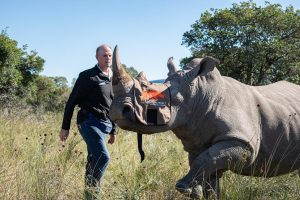And then there were 6,000. Photographer Joel Sartore took this milestone image of a male proboscis monkey at the Singapore Zoo for the Photo Ark.
Scientists think male proboscis monkeys’ fleshy, pendulous noses create an echo chamber that amplifies its call, impressing females and intimidating rival males.
Native to Borneo, these tree-dwellers live in organized harem groups consisting of a dominant male and two to seven females and their offspring. Various groups often congregate near water at night to sleep.
The National Geographic Photo Ark is an ambitious project committed to documenting every species in captivity—inspiring people not just to care, but also to help protect these animals for future generations.
Sartore, the project’s founder, has visited more than 40 countries in his quest to create this photo archive of global biodiversity. He won’t stop, he says, until he documents all 12,000 captive species. (See “Inside One Man’s Quest to Build a Photo Ark for Animals.”)
In recent decades, proboscis monkey populations have plummeted. They are considered endangered by the International Union for Conservation of Nature.
He photographs at zoos and aquariums worldwide because they “are the true arks today, and often have the only breeding populations of many animals that are virtually extinct in the wild,” he has said.
“I use black and white backgrounds because it’s a great equalizer,” Sartore says.
“A tiger is no more important than a tiger beetle. And a mouse matters just as much as a polar bear. I hope to get the public to pay attention to the extinction crisis and get them to care, while there’s still time to save these species,”reports national-geographic.




